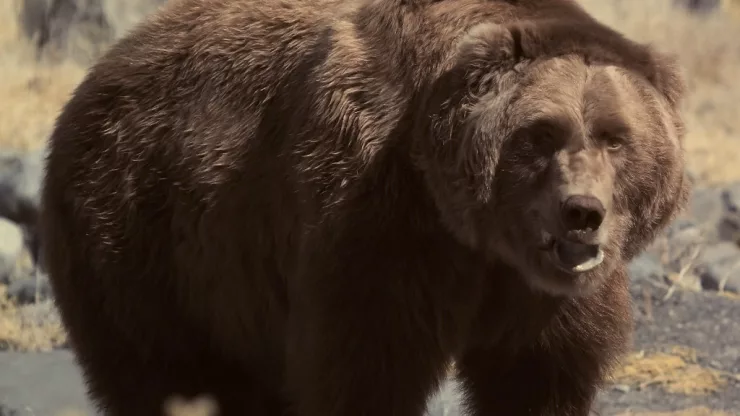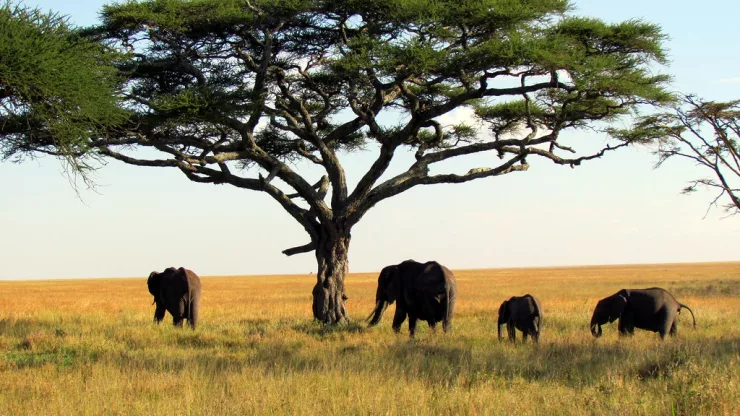Brecon Beacons National Park: Wales’ Wildlife Magic
Brecon Beacons National Park is a vast expanse of rolling hills, towering mountains, and lush forests that cover over 500 square miles in South Wales.
The park is a haven for wildlife, offering a diverse range of habitats for a vast array of animals and plants.
From the majestic Red Kite to the delicate Wildflowers, Brecon Beacons National Park is a place of wonders that will leave nature enthusiasts in awe.
This article will highlight the park’s flora and fauna, conservation efforts, and activities for visitors to enjoy while exploring the park.
Jump to Section
Overview of Brecon Beacons National Park
Brecon Beacons National Park is located in South Wales and is home to some of the most breathtaking landscapes in the United Kingdom.
The park covers an area of 519 square miles, making it the third-largest national park in Wales.
The park is known for its rugged terrain, including the highest peak in South Wales, Pen y Fan, which stands at 886 meters.
The park is also a site of historical importance, with evidence of human activity dating back to the Neolithic period.
Importance of the park for wildlife conservation
Brecon Beacons National Park is a critical site for wildlife conservation in Wales.
The park’s unique habitats, including moorland, grassland, and woodland, provide a home for a diverse range of plants and animals. The park’s wildlife is protected by the National Park Authority, which works to conserve and enhance the park’s natural environment.
Flora and Fauna of Brecon Beacons National Park
Native Plants of the Park
Brecon Beacons National Park is home to a wide variety of native plants, including the Purple Moor Grass, the Bog Asphodel, and the Devil’s Bit Scabious.
The park is also home to a diverse range of trees, including the Silver Birch, the Rowan, and the Mountain Ash.
Wildlife of the Park
Brecon Beacons National Park is home to a wealth of wildlife, including mammals, birds, reptiles, and amphibians.
Mammals
The park is home to several mammal species, including the Red Fox, the Badger, and the Otter.
Visitors may also spot the rare and elusive Pine Marten, which was reintroduced to the park in 2015.
Birds
Brecon Beacons National Park is a birdwatcher’s paradise, with over 200 bird species recorded in the park.
Visitors may spot the Red Kite, the Peregrine Falcon, and the Common Buzzard, among others.
Reptiles and Amphibians
The park is home to several reptile and amphibian species, including the Common Lizard, the Adder, and the Smooth Newt.
Insects
Brecon Beacons National Park is a haven for insect life, with over 1,000 species recorded in the park.
Visitors may spot the rare Large Blue Butterfly, which was reintroduced to the park in 2010.
Threats to the Wildlife
Brecon Beacons National Park’s wildlife faces several threats, including climate change, habitat loss, and invasive species.
Climate Change
Climate change poses a significant threat to the park’s wildlife, with rising temperatures and changing weather patterns affecting plant and animal species.
Habitat Loss
Habitat loss is another significant threat to the park’s wildlife, with human activities such as agriculture and urbanization encroaching on natural habitats.
Invasive Species
Invasive species, such as the Rhododendron and the Japanese Knotweed, pose a threat to the park’s native flora and fauna.
Conservation Efforts in Brecon Beacons National Park
Brecon Beacons National Park is committed to conserving and enhancing the park’s natural environment through a range of initiatives.
National Park Authority Initiatives
The National Park Authority works to conserve and enhance the park’s natural environment through initiatives such as habitat restoration, species reintroduction, and conservation education.
Community-Based Conservation Projects
Community-based conservation projects, such as the Brecon Beacons Bat Project and the Beacons to the Sea Project, work to engage local communities in wildlife conservation efforts.
Private Sector Conservation Programs
Private sector conservation programs, such as the Woodland Trust and the National Trust, work to conserve and manage land within the park.
Activities for Wildlife Enthusiasts in Brecon Beacons National Park
Brecon Beacons National Park offers a range of activities for wildlife enthusiasts to enjoy while exploring the park.
Bird Watching
The park’s diverse range of bird species makes it an excellent location for bird watching.
Visitors can spot birds of prey, such as the Red Kite and the Peregrine Falcon, as well as a range of other bird species.
Wildlife Photography
Brecon Beacons National Park’s stunning landscapes and diverse wildlife make it an ideal location for wildlife photography.
Wildlife Tracking
Visitors can learn about the park’s wildlife by participating in wildlife tracking activities, such as guided walks and animal tracking workshops.
Nature Walks and Hiking
Brecon Beacons National Park offers a range of nature walks and hiking trails, allowing visitors to explore the park’s diverse range of landscapes and wildlife.
Camping and Glamping
Visitors can immerse themselves in the park’s natural environment by camping or glamping within the park’s designated campsites.
Conclusion
Brecon Beacons National Park is a unique and valuable site for wildlife conservation in Wales.
The park’s diverse range of habitats provides a home for a wide variety of plant and animal species, making it an essential site for biodiversity conservation.
Visitors to the park can enjoy a range of activities while learning about the park’s wildlife and supporting conservation efforts.
The Importance of Preserving Brecon Beacons National Park’s Wildlife
The preservation of Brecon Beacons National Park’s wildlife is essential for maintaining the park’s ecological balance, supporting biodiversity conservation, and ensuring future generations can enjoy the park’s natural wonders.
Call to Action for Visitors and Locals Alike
Visitors and locals can support conservation efforts in Brecon Beacons National Park by practicing responsible tourism, supporting conservation initiatives, and spreading awareness about the park’s wildlife magic.
FAQ
What is the best time to visit Brecon Beacons National Park?
The best time to visit Brecon Beacons National Park is during the summer months, from June to August, when the weather is warm and dry.
Can I bring my dog to Brecon Beacons National Park?
Yes, dogs are allowed in Brecon Beacons National Park but must be kept on a leash at all times.
Are there any guided tours available in the park?
Yes, there are several guided tours available in the park, including wildlife tracking and bird watching tours.
Is camping allowed in Brecon Beacons National Park?
Yes, camping is allowed in designated campsites within the park.
I’m a nature enthusiast and creator of Metro Wilds and have spent years exploring the great outdoors.
With a passion for environmental conservation and sustainability, I have dedicated my career to writing about the beauty and wonders of nature, as well as the threats facing our planet.
Contact me at [email protected] for assistance.




